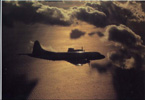ChezDaJez
Posts: 3436
Joined: 11/12/2004
From: Chehalis, WA
Status: offline

|
quote:
If it was your mod - how would you do it?
I would take into account where ever possible any particularly vulnerable part of an aircraft such as the tail boom on the P-38 or radiators on inline-engined aircraft. I would probably use a + / - system to rate them. Add for self-sealing fuel tanks, armor, and structural integrity. Minus for in-line engine or structural weakness such as the dive limitation for the Zero.
From what I've read, I don't think your mod is that far off from what I might have done. I just might have carried it a bit further if possible. We can quibble over things here and there but I do like the fact that you have taken into account wing-loading for maneuverability.
Chez
_____________________________
Ret Navy AWCS (1972-1998)
VP-5, Jacksonville, Fl 1973-78
ASW Ops Center, Rota, Spain 1978-81
VP-40, Mt View, Ca 1981-87
Patrol Wing 10, Mt View, CA 1987-90
ASW Ops Center, Adak, Ak 1990-92
NRD Seattle 1992-96
VP-46, Whidbey Isl, Wa 1996-98
|
 Printable Version
Printable Version













 New Messages
New Messages No New Messages
No New Messages Hot Topic w/ New Messages
Hot Topic w/ New Messages Hot Topic w/o New Messages
Hot Topic w/o New Messages Locked w/ New Messages
Locked w/ New Messages Locked w/o New Messages
Locked w/o New Messages Post New Thread
Post New Thread